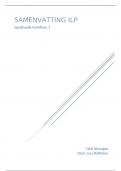Samenvatting
Summary A21 Physics Flashcards
- Vak
- Instelling
I have included all the definitions, equations and base line detail that you need to know for this course. There are also experiments included in this, however this is NOT helpful for the A23B exam.
[Meer zien]












